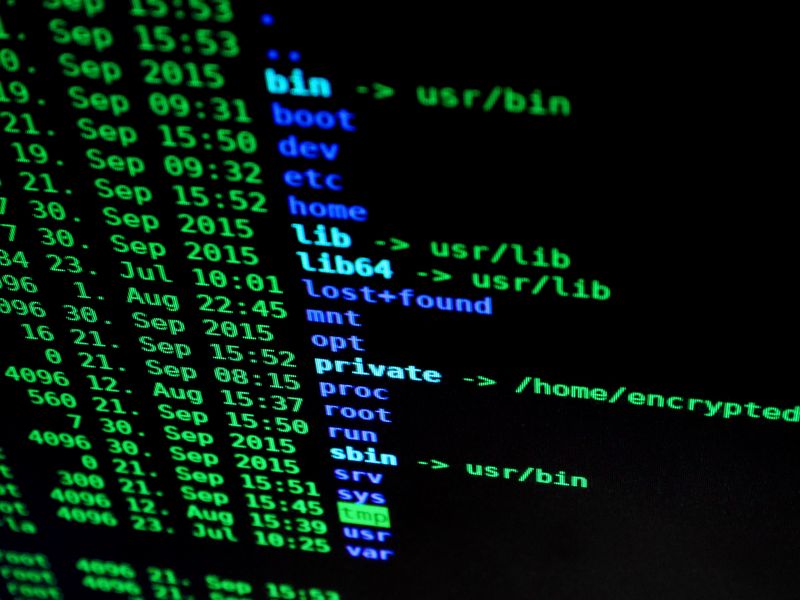Malicious NPM Packages Steal User and System Data, Fortinet Warns
October 3, 2023 | By
Fortinet, a cybersecurity company, has recently issued a warning about a series of malicious Node Package Manager (NPM) packages that have been discovered in the NPM Registry. These packages contain install scripts designed to steal sensitive information from users’ systems. The packages were found to collect system and user data and then exfiltrate it through various methods such as webhooks or file-sharing links.
Fortinet’s security researchers have identified a total of 35 malicious NPM packages, which they have grouped into nine sets based on similarities in code and functions. Each set targets specific types of sensitive information for exfiltration. The install scripts within these packages run either before or after the installation of the NPM package and are designed to harvest data during these processes.
The first set of packages contains an obfuscated index.js script that can steal Kubernetes configurations, SSH keys, and other sensitive information. It also targets system data such as IP addresses, hostnames, and usernames.
The second set of packages includes an index.js file that sends an HTTP GET request to a specific URL, scans for specific files and directories, and exfiltrates developer data such as source code and configuration files. This data can potentially include highly valuable intellectual property and other sensitive information.
The third and fourth sets utilize an index.mjs script that relies on a Discord webhook for exfiltration of sensitive data, with each set using a different coding style.
The fifth set contains an index.js install script that uses a webhook to exfiltrate hostnames, usernames, and the contents of the home directory.
The seventh set uses an installer.js install script that not only exfiltrates sensitive data but also disables TLS certificate validation, making the connection vulnerable to eavesdropping.
The eighth set is designed to automatically fetch and execute potentially malicious executable files.
Lastly, the ninth set of packages gathers system information and exfiltrates it to a Discord webhook.
Fortinet advises end users to be cautious and watch out for packages that employ suspicious install scripts. They urge users to exercise caution when installing NPM packages and to remain vigilant for signs of malicious activity. They also assure users that they will continue hunting for and reporting malicious packages to help users avoid becoming victims.
Internet Security and User Protection
This recent discovery highlights the ongoing challenge of ensuring the security of software supply chains and protecting users’ data. Malicious actors are increasingly finding ways to infiltrate trusted sources and distribute harmful code to unsuspecting users. It is essential for developers and users to remain vigilant and implement robust security measures to mitigate the risk of these threats.
The Rising Threat of Malicious Packages
The discovery of these malicious NPM packages adds to the growing list of cybersecurity incidents involving software packages. Over the past year, there have been several reports of malicious packages targeting different programming languages and platforms, including Python and Ruby.
The increasing popularity of package managers such as NPM, PyPI, and RubyGems has made them attractive targets for cybercriminals. These platforms provide a convenient way for developers to manage dependencies and integrate third-party libraries into their projects. However, this convenience can also make it easier for malicious actors to exploit vulnerabilities and distribute harmful code.
Protecting the Software Supply Chain
To address these vulnerabilities, it is crucial for developers to adopt secure coding practices and thoroughly vet the packages they incorporate into their projects. This includes regularly updating packages to prevent known vulnerabilities and conducting regular security audits to identify any potential risks.
Package managers themselves also play a vital role in protecting the software supply chain. They should implement robust security measures, including code analysis and verification processes, to detect and prevent the distribution of malicious packages. Additionally, continuous monitoring and timely response to reported vulnerabilities are essential to ensure the prompt removal or patching of any identified threats.
Editorial: Strengthening the Security of Software Supply Chains
The recent discovery of malicious NPM packages serves as a reminder that the software supply chain remains a vulnerable area in the cybersecurity landscape. Developers and users must work together to strengthen security measures and protect against these threats.
A Philosophical Discussion: Trust in the Digital Age
The rise of software vulnerabilities and malicious packages raises broader questions about trust in the digital age. As individuals and organizations increasingly rely on software in their daily lives, trust becomes a critical factor. Trust in the security of software and the integrity of the supply chain is paramount to safeguarding sensitive information and ensuring the smooth functioning of systems.
However, as recent events have shown, trust cannot be taken for granted. The complexity of modern software development and the interconnectedness of the digital ecosystem make it difficult to maintain full visibility and control over every component. This creates opportunities for malicious actors to exploit vulnerabilities and compromise systems.
Building a Culture of Security
To overcome these challenges, there needs to be a collective effort to build a culture of security that permeates all levels of software development and usage. This includes fostering a mindset of continuous improvement and learning, encouraging robust security practices, and prioritizing the protection of user data.
Developers should prioritize security in every stage of the software development lifecycle, from code creation to deployment. They should regularly update dependencies, perform security testing, and strive for transparency and accountability in their development processes.
Users, on the other hand, should remain vigilant and exercise caution when downloading or installing software packages. They should only rely on trusted sources and validate the integrity of the software they use.
Advice for Users and Developers
In light of this recent discovery, here are some actionable steps that users and developers can take to enhance their security:
For Users:
- Be cautious when installing NPM packages or any third-party software. Only use trusted sources and verify the integrity and security of the packages before installation.
- Regularly update your software and packages to ensure they have the latest security patches.
- Implement robust security measures, such as using an antivirus program and a firewall, to protect your system from potential threats.
- Stay informed about the latest cybersecurity news and incidents to remain vigilant and aware of potential risks.
For Developers:
- Adopt secure coding practices and regularly update your code to prevent known vulnerabilities.
- Conduct thorough security audits of your projects to identify and address any potential risks.
- Vet and monitor the packages you incorporate into your projects to ensure they come from trusted sources and have undergone proper security checks.
- Stay up-to-date with the latest security best practices and implement them in your development processes.
By taking these proactive steps, users and developers can contribute to a more secure software ecosystem and help mitigate the risk of malicious packages and data breaches.

<< photo by Dan Nelson >>
The image is for illustrative purposes only and does not depict the actual situation.
You might want to read !
- Rising security concerns as hackers leverage an old-school weapon: the ‘Shift’ key to exploit npm packages
- Danger Ahead: Macs Under Attack by Malicious Packages on PyPI, NPM, and Ruby
- Rising Threat: Malicious npm Packages Pose Risk to Developers’ Source Code Security
- NPM Attack: Developers Beware of Malicious Packages Stealing Source Code
- The Hidden Dangers of APIs: Unveiling the Unknown Risks of Data Sharing
- National Security Agency Launches AI Security Center: Protecting the Digital Frontier
- 7 Essential Security Measures for WordPress Sites: Protecting Small and Medium Businesses
- “Unveiling the Threat: Exploring the New GPU Side-Channel Attack”
- Why Visibility Alone Can’t Ensure the Security of Operational Technology Systems
- The Rise of Malware: How Thousands of Systems Have Become Proxy Exit Nodes
- Mozilla Introduces Innovative Feature to Safeguard User Security by Blocking Risky Add-Ons on Specific Websites
- “Uncovering WordPress’s Vulnerability: Social Login Plugin Compromises User Security”




